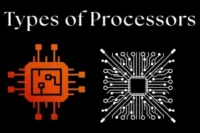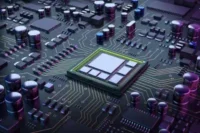Top 8 Types of Scanners: Which One Suits Your Needs?
Published: 12 Aug 2025
Scanners have become a crucial tool for converting real documents, photos, and even objects into digital formats. Whether you’re scanning office documents, photographs, barcodes, or 3D objects, selecting the appropriate scanner may boost productivity and accuracy. With numerous types of scanners available, it’s crucial to understand their roles and distinctions. In this post, we’ll look at the most common scanner types, how to select the best one for your needs, and common pitfalls to avoid when purchasing a scanner.
What is a Scanner?
A scanner is an electronic device that converts physical documents, photos, or objects into digital format. It enhances efficiency by enabling easy storage, sharing, and editing of documents. Scanners are widely used in offices, businesses, and creative industries for digitization.
Since scanners need specific programs to function properly, knowing different types of software also helps in understanding how scanners work more effectively.

Types of Scanners
Different types of scanners serve different purposes. Here’s a breakdown of the most popular ones:
1. Flatbed Scanner
A flatbed scanner features a glass surface on which papers, pictures, or books can be placed for scanning. It generates high-quality scans with exact information, making it perfect for sensitive or bound items. It is widely utilized in workplaces, photography, and design work, ensuring flexibility and accuracy.
2. Portable Scanner
A portable scanner is a small, lightweight device used to scan papers, images, or receipts on the go. It runs on batteries or USB power, which makes it ideal for professionals, students, and travelers. Its seamless connectivity to PCs and mobile devices offers quick and efficient digitizing from anywhere.
3. Barcode Scanner
A barcode scanner is a device that reads and decodes barcodes to quickly get product or inventory information. It scans barcodes with laser, CCD, or image technologies and transfers the data to a computer or POS system. It is widely used in retail, storage, and logistics to improve efficiency and accuracy in tracking and sales.
3. Drum Scanner
A drum scanner is a high-end scanning device that uses photomultiplier tubes (PMTs) to capture images with high resolution and color fidelity. It’s great for professional photography, high-resolution printing, and archival storage. It is widely used in publishing and fine art reproduction, and it produces higher-quality images than other scanners.
5. OCR Scanner (Optical Character Recognition)
An optical character recognition (OCR) scanner translates printed or handwritten text into editable and searchable digital formats. It employs advanced technology to recognize characters, making it suitable for scanning books, bills, and legal documents. It is commonly used in workplaces, libraries, and businesses to improve document management and accessibility.
6. Overhead Scanner
An overhead scanner uses a built-in camera and light source to scan books, documents, or items without requiring direct touch. It takes high-quality photographs from above, making it excellent for delicate books, bound materials, and three-dimensional items. These scanners are widely used in libraries, offices, and archives for quick, non-destructive scanning.
7. 3D Scanners
A 3D scanner scans actual items from many angles, capturing their shape and characteristics. It transforms these specifications into a digital 3D model that can be utilized for design, animation, or production. These scanners are widely utilized in areas such as engineering, gaming, and healthcare to do exact modeling and analysis.
8. Photo Scanner
A Photo Scanner was designed specifically to scan images at high resolution and color accuracy. It catches minute details and subtleties in photographs, resulting in digital reproductions that closely resemble the originals. Photographers, archives, and anybody wishing to scan old photographs frequently utilize these scanners.
How to Choose the Right Type of Scanner
When selecting a scanner, consider the following factors:
- Purpose: Do you need it for documents, photos, barcodes, or 3D scanning?
- Resolution & Quality: Higher DPI (dots per inch) means better image clarity.
- Speed & Efficiency: Choose a fast scanner if scanning large volumes regularly.
- Connectivity: Look for USB, Wi-Fi, or cloud integration based on your needs.
- Size & Portability: Desktop vs. portable scanners based on usage.
- Budget: Balance between features and affordability.
Common Mistakes to Avoid When Buying a Scanner
- Choosing the Wrong Type: Not all scanners fit every need; research before buying.
- Ignoring Resolution: Low-resolution scanners may not capture enough detail.
- Overlooking Compatibility: Ensure the scanner works with your operating system and software.
- Neglecting Speed Needs: A slow scanner can be frustrating for office use.
- Skipping Maintenance Costs: High-end scanners may require expensive upkeep.
Conclusion
Scanners are essential for converting papers, photos, and even 3D models. Understanding the different types of scanners helps you choose the ideal one for your needs. Making an informed decision ensures efficiency and quality, whether in an office, photography, or retail setting. Avoid common mistakes and invest in a scanner that best suits your requirements.
Frequently Asked Questions [FAQs]
We’ve answered some frequently asked questions about scanners to make your buying decision easier:
The main types of scanners include flatbed scanners, sheet-fed scanners, handheld scanners, drum scanners, and 3D scanners. Each type serves different purposes based on scanning needs.
Flatbed scanners, particularly those with high DPI and color depth, are ideal for scanning photos of high resolution and clarity.
Handheld scanners are portable devices used to scan barcodes, documents, or books while on the go. They’re widely utilized in retail, logistics, and rapid document scanning.
Drum scanners use photomultiplier tubes (PMTs) to provide ultra-high-resolution scans, making them perfect for professional photographers and high-end publishing
3D scanners measure the shape and size of items in three dimensions. They are utilized in several areas, including manufacturing, healthcare, gaming, and architecture

- Be Respectful
- Stay Relevant
- Stay Positive
- True Feedback
- Encourage Discussion
- Avoid Spamming
- No Fake News
- Don't Copy-Paste
- No Personal Attacks

- Be Respectful
- Stay Relevant
- Stay Positive
- True Feedback
- Encourage Discussion
- Avoid Spamming
- No Fake News
- Don't Copy-Paste
- No Personal Attacks





